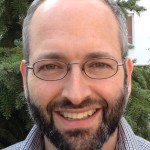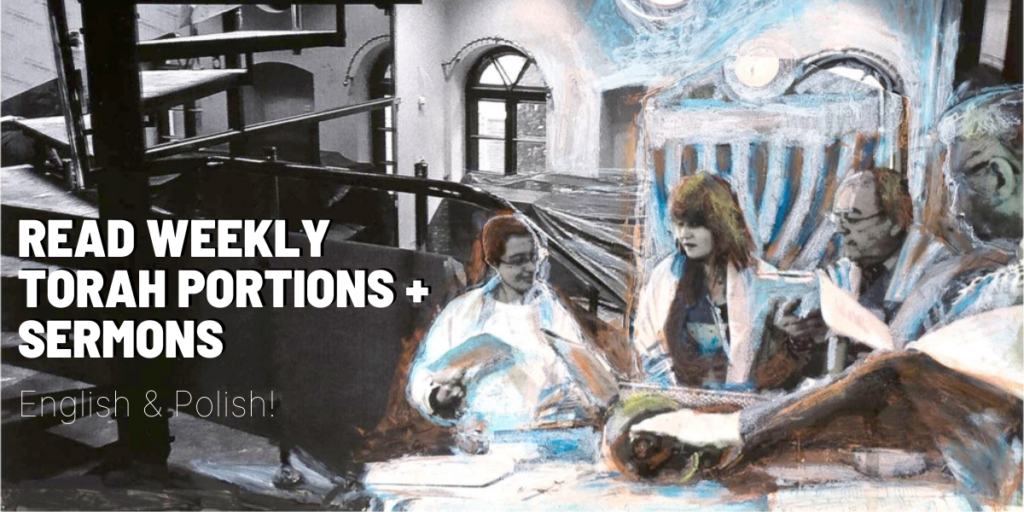December 18th, 2015/6 Tevet 5776
To bless the new moon at the proper time is like greeting the Divine Presence — Talmud, Sanhedren 42a
I don’t know why, but I seem to spend more time looking at the moon in the winter. As I head outside into the cold of night, the light of the moon seems even more clear and strong, and I am always amazed that whether I am standing out among the trees of the forest or amid the lights of downtown Warsaw, the moon seems just as bright.
Many people know about the celebration of Rosh Hodesh, the beginning of each new month in the Jewish calendar. During this holy day, we celebrate the cycle of the moon, chant Hallel (the songs of praise said during times of joy) and also recall our connection with the cosmos and the cycles of the heavens. In some communities Rosh Hodesh has become a “women’s day” where women gather together to sing, pray and share blessings.
Yet there is another monthly moon holiday, which is lesser known but in many ways just as important. For this ritual, the tradition requires stepping outside and trying our best to actually see the moon for ourselves. Each month, at least three days after the new moon, as we begin to see the moon’s light, we take this opportunity to gather together, look at the heavens, recite selections of psalms and sing. This fascinating ritual was called by the rabbis “Kiddush Levana,” the sanctification of the moon, and is a powerful reminder of our connection to the universe, and to each other.
According to the Talmud, the waxing and waning of the moon reminds us of God’s presence in the world, that the Divine Presence is always around us, and just like the moon, will be visible if we know how to pay attention. Unless the sky is full of clouds, even cold weather should not prevent this important mitzvah. (In many synagogues in Israel, the words for the blessing are even printed in large letters out the outside walls of the synagogue building so that they can be seen in the dim light of the moon.)
There is a tradition not to look directly at the moon as we are offering our prayers, since these prayers are not for the moon, but instead are intended for its creator, and to the mysteries of the universe that keep the cycles of the months, and provide the lights of the stars. But we can’t say these prayers inside the comfort of our homes or synagogues–we need to have the moon shining over us in order to bless it.
Our tradition also offers a simple and profound explanation for the ritual of Kiddush Levana. The Jewish people, like the moon, waxes and wanes. There have been times throughout history when we have been bright and strong, truly illuminating as a light among the nations, and there have been times when we have been weakened and our existence threatened. Yet like the moon, even when times are most dark, we always come back.
Another meaning of the this mysterious ritual can be found in the way it ends: before we head back inside, we are told to dance with joy. With nothing between us and the moon but thousands of miles of darkness, we celebrate the knowledge that we regardless of the the cycles of the history of our people, and knowing of the cycles of our own lives, there is a light that connects us to God, to the mysteries of the universe and to each other. Even when hidden, that light, that blessing is just waiting to reappear.
18 grudnia 2015/6 tewet 5776
Parasza Wajigasz
Gdy w stosownym czasie błogosławimy nowy księżyc – to tak, jak gdybyśmy chcieli powitać Bożą obecność. Talmud, Sanhedryn 42a
Nie wiem dlaczego, ale w okresie zimowym częściej spoglądam na księżyc. Gdy wychodzę z domu w mroźną noc, światło księżyca wydaje mi się jeszcze mocniejsze i jaśniejsze. Zawsze zadziwia mnie fakt, że niezależnie od tego, czy znajduję się w lesie, wśród drzew, czy też w rozświetlonym centrum Warszawy, księżyc zdaje się zawsze świecić równie mocno.
Wiele osób zdaje sobie sprawę, że istnieje specjalna ceremonia na święto Rosz Chodesz, czyli na pierwszy dzień każdego nowego miesiąca w kalendarzu żydowskim. W tym dniu wyrażamy naszą radość z faktu istnienia różnych faz księżyca, odśpiewujemy Halel (pieśni pochwalne śpiewane przy radosnych okazjach), podkreślamy też naszą więź z kosmosem oraz powtarzalny rytm, jakiemu podlegają planety i gwiazdy. W niektórych społecznościach Rosz Chodesz stał się „dniem kobiet”, podczas którego panie spotykają się na wspólne śpiewy, modlitwy i błogosławieństwa.
Istnieje jednak również inne święto związane z księżycem, które powinniśmy obchodzić co miesiąc. Jest ono mniej znane, ale pod wieloma względami równie ważne. Zgodnie z tradycją w celu wypełnienia tego rytuału należy wyjść na zewnątrz i postarać się ujrzeć księżyc. Co miesiąc, co najmniej trzy dni po nowiu księżyca, gdy jego światło zaczyna być już widoczne, mamy okazję się spotkać, spoglądać w niebo i wspólnie śpiewać oraz recytować wybrane fragmenty psalmów. Rabini nazwali ten fascynujący rytuał kidusz lewana – uświęceniem księżyca. Rytuał ten stanowi ważne przypomnienie o więzi, jaka łączy nas ze wszechświatem oraz z innymi ludźmi.
Według Talmudu proces zwiększania się i zmniejszania księżyca przypominać ma nam o Bożej obecności na świecie. Boża obecność zawsze nas otacza. Podobnie jak w przypadku księżyca – dostrzeżemy ją, jeśli tylko będziemy potrafili zwrócić na nią uwagę. Mroźna pogoda nie powinna przeszkodzić nam w wypełnieniu tej ważnej micwy, chyba, że dni są akurat bardzo pochmurne. (W wielu synagogach w Izraelu słowa wypowiadanego podczas tego rytuału błogosławieństwa zapisane są dużymi literami na zewnętrznych murach synagogi – tak, by można było je odczytać nawet przy słabym świetle księżyca).
Zgodnie z tradycją ofiarując nasze modlitwy nie powinniśmy spoglądać bezpośrednio na księżyc, modlitwy te nie są bowiem przeznaczone dla księżyca – służyć mają raczej oddaniu czci jego Stwórcy oraz tajemnicy wszechświata, dzięki której planety i gwiazdy emitują światło i poruszają się zgodnie z powtarzalnym rytmem. Modlitw tych nie możemy wypowiadać jednak w przytulnym zaciszu naszego domu lub w synagodze – księżyc możemy pobłogosławić tylko wtedy, gdy będzie on na nas świecił.
Nasza tradycja przedstawia proste, ale zarazem głębokie wyjaśnienie rytuału kidusz lewana. Lud żydowski, podobnie jak księżyc, czasem rośnie w siłę, a czasem staje się słabszy. W niektórych momentach naszej historii byliśmy silni, byliśmy mocnym światłem pośród narodów. Przydarzały nam się jednak również momenty słabości, gdy zagrożone było samo nasze istnienie. Jednakże – podobnie jak w przypadku księżyca – nawet w najmroczniejszych chwilach wiemy, że prędzej czy później nasze światło znów stanie się jasne i mocne.
Inne wyjaśnienie tego tajemniczego rytuału możemy znaleźć w sposobie, w jaki kończymy ceremonię kidusz lewana. Przed powrotem do ciepłego pomieszczenia powinniśmy odtańczyć taniec radości. Pomiędzy nami a księżycem nie ma niczego poza tysiącem kilometrów ciemności, my wyrażamy zaś radość z faktu, że wciąż istniejemy – pomimo trudnych okresów w historii naszego ludu. Wiemy, że na różnych etapach naszego życia zawsze istnieć będzie światło, które łączy nas z Bogiem, z tajemnicą wszechświata oraz z innymi ludźmi. Nawet wtedy, gdy światło oraz błogosławieństwa są niewidoczne, czekają one tylko na odpowiedni moment, aby znów się pojawić.
Tłum.: Marzena Szymańska-Błotnicka



















Leave a Reply